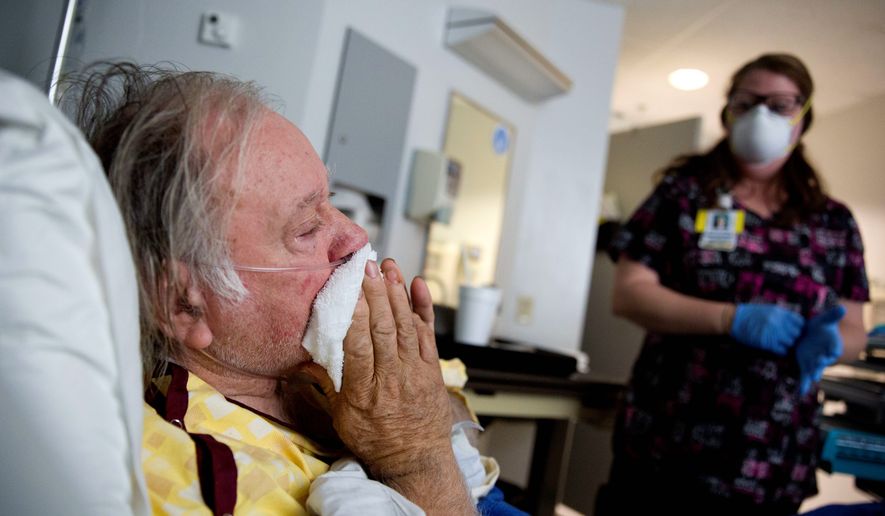This flu season is the worst since health officials started keeping records on infections in 2004, surpassing all metrics from the previous worst outbreak of 2014/2015 as illnesses, hospitalizations and deaths keep rising across the nation.
“Unfortunately, we were hoping that it would start turning around and going the opposite direction, but it’s still going up,” said Dr. Anthony Fauci, head of the Institute of Allergy and Infectious Diseases. “So we really need to just grit our teeth and say hopefully in the next week or two it will turn around, but it’s not doing that right now unfortunately.”
Since October, health officials have watched flu cases closely mirror the statistics of the 2014/15 outbreak, with H3N2 the dominant strain then and now. Cases that year started to drop off at the beginning of January, but all measures this season are increasing, according to the Centers for Disease Control and Prevention.
“The one thing we can see is that, if you exclude the pandemic of 2009 this clearly is the worst among the seasonal flus,” Dr. Fauci said.
The 2009 pandemic was categorized by its worldwide outbreak of a novel strain of H1N1 and its length, from spring through winter.
While this flu season began, as usual, in the fall, the number of cases have yet to decline in any meaningful way, and are inching higher.
At least 43 states, New York City, the District of Columbia and Puerto Rico are reporting a high number of influenzalike illnesses.
The virus continues to be widespread in 48 states and Puerto Rico. Only Oregon and Hawaii have had any respite, Dr. Fauci said, with the CDC downgrading their flu status as “regional.”
The full extent of flu won’t be known until the conclusion of the season, when data from all states and territories can be assessed.
According to the CDC, the percentage of hospital visits for influenzalike illness was 7.7 percent for the week ending Feb. 3. It was at 3.6 percent during the same time in 2014/15.
For the week ending Jan. 20, 10.1 percent of adult deaths were related to pneumonia or the flu, up from 9.7 percent the previous week.
Meanwhile, 63 children have died from flu complications over the past four months, with at least 26 of those deaths occurring in the last two weeks.
People 65 years old and older continue to experience the most hospitalizations, at a rate of 59.9 per 100,000. The second-most hospitalized group are adults age 50 to 64 years old, at a rate of 63.1 per 100,000.
Hospitalization rates for children up to 4 years old have increased to 40 per 100,000 from 27 the week before.
An estimated 67.8 percent of hospitalized persons reported at least one underlying medical condition. For adults, that included cardiovascular disease, metabolic disorder, obesity and chronic lung disease.
About half of hospitalized children had at least one underlying medical condition, with the most commonly reported syndromes being asthma, neurologic disorder and obesity.
By the end of the 2014/15 season, there were 56,000 deaths — including 148 pediatric deaths — 710,000 hospitalizations and 36.5 million symptomatic cases.
Those diagnosed with the flu are encouraged to take antivirals like Tamiflu or Relenza, which, if taken within two days of symptoms, can help decrease the severity of illness and the time someone is sick by about one day.
A number of pharmaceutical companies are trying to develop more fast-acting antivirals.
Shionogi, a Japan-based drug developer, announced in September that clinical trials for its experimental antiviral showed significant improvement in alleviating flu symptoms in as little as 24 hours.
The Wall Street Journal reported that the company is trying to fast-track approval by Japan’s drug administration for March and that the science has been received favorably by the World Health Organization.
Dr. Fauci expressed caution over the drug’s effectiveness, noting that Shionogi has yet to apply for regulation in the U.S.
“Apparently it suppresses the virus at an earlier stage than does Tamiflu, whether or not that’s going to spell out into a substantial clinical difference between Tamiflu I think is still an open question,” he said.
• Laura Kelly can be reached at lkelly@washingtontimes.com.




Please read our comment policy before commenting.